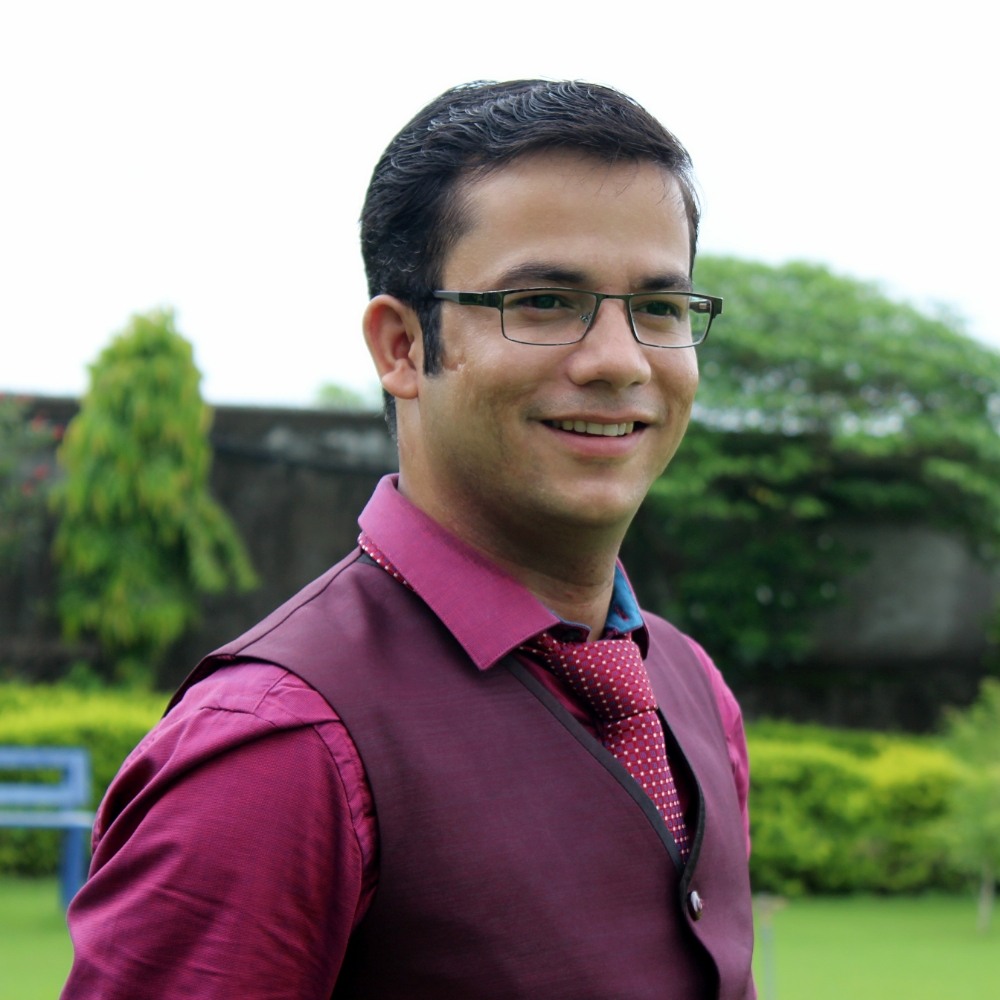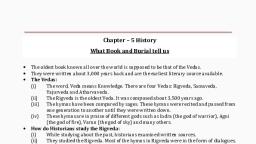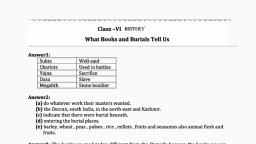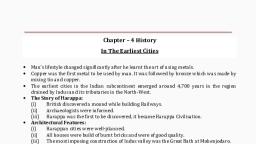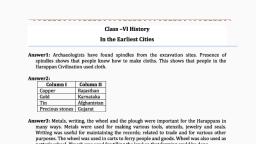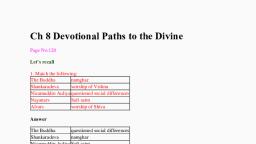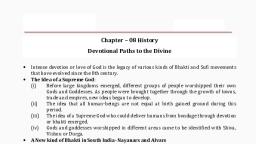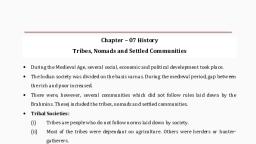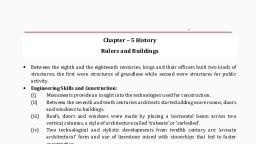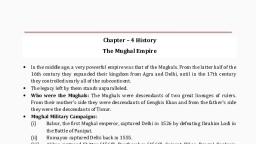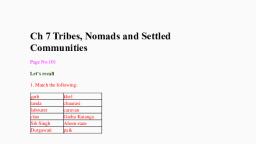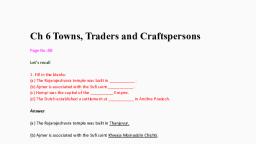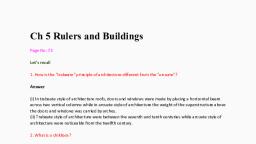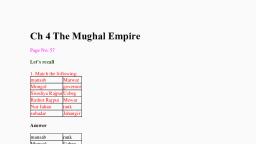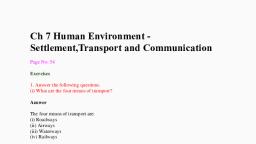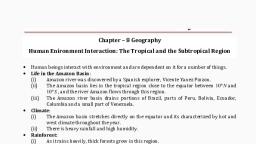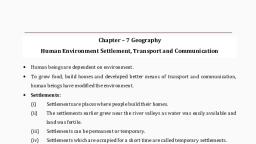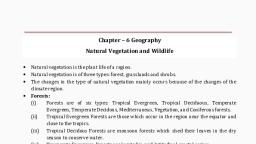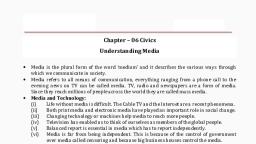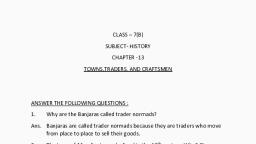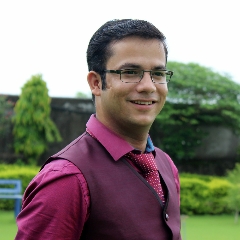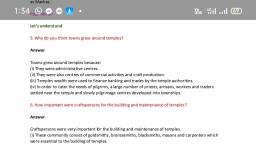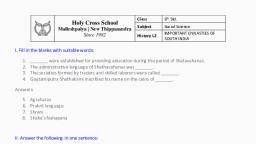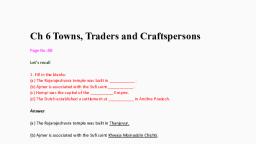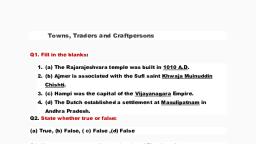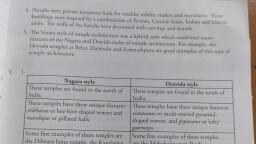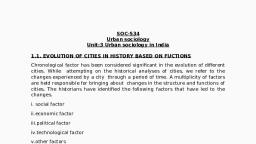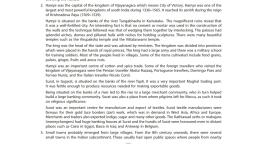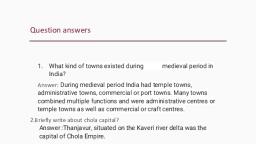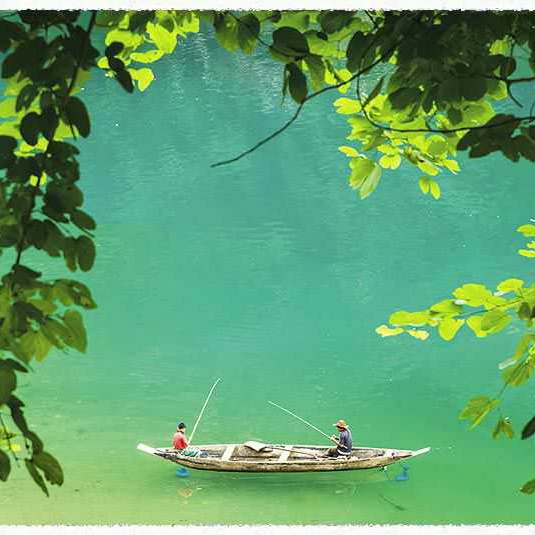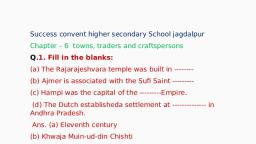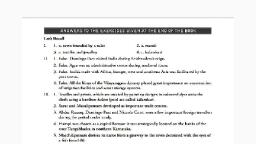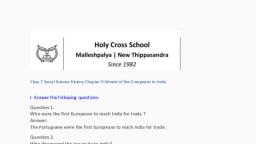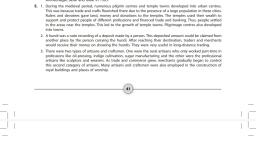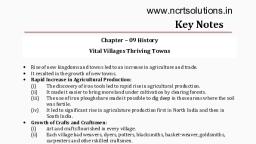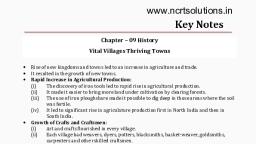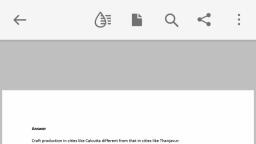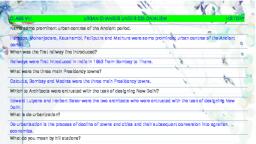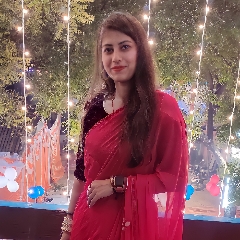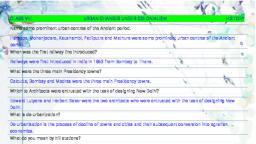Page 1 :
Chapter – 6 History, Town, Traders and Craftspersons, •, , One of the most interesting aspects of the medieval period in the 17th century was the, growth of urbanization., , •, , The Arabs, Turkish and Afghans settled in many parts of the country leading to the evolution, of towns and cities., , •, , Sources of Knowing About the History of this Period:, (i), , The sources of history are travelers’ accounts., , (ii), , Monserrate, Flitch, Thomas Roe, Domingo Paes, Nicolo Conti and Abdul Razzaq, Samarqandi wrote aboute the life of this period., , •, , •, , •, , •, , Court Towns:, (i), , Some of the important court towns were Lahore, Agra, Fatehpur Sikri and Delhi., , (ii), , Fatehpur Sikri was the new capital founded by Akbar., , (iii), , Delhi was known as Shahjahanabad and was buit by Shah Jahan in 1639., , Port and Trading Towns:, (i), , Some towns developed as ports due to their proximity to the sea shore., , (ii), , Some major ports were Cambay, Surat, Broach, Masulipatanam, Nagapattinam, etc., , Administrative Towns:, (i), , Some towns were capital citites. They were centres of administration., , (ii), , Thanjavur and Uraiyur were important centres., , Temple Towns and Pilgrimage Centres:, (i), , Temples towns were important centres of urbanization and led to development of, cities, economy and society., , (ii), , Pilgrims gave huge donaitons to temples. This wealth was used by temple authorities, to finance their trade and banking., , (iii), •, , •, , Some such important towns were Somnath, Madurai, Trupati, Vrindavan, Ajmer, etc., , How important was Bronze:, (i), , Bronze is an alloy compound of copper and tin., , (ii), , Chola rulers used this metal to make statues through the ‘lost wax’ technique., , Emergence of Small Towns:
Page 2 :
(i), , From the 8th century onwards, small towns emerged in India. They emerged from, large villages. They had a ‘mandapika’ where villagers sold their produce., , (ii), , Likewise, there were market streets, called ‘hatta’, full of shops., , (iii), , Many villagers came to buy local articles and sell products like horses, camphor,, saffron betel nut, spices, salt, etc., , (iv), , Normally a Samanta was appointed who fortified the palaces and gave the right to, collect taxes from traders, artisans, etc., , •, , Name of Traders:, (i), , Many kinds of traders existed., , (ii), , Trader travelled in caravans by forming guilds., , (iii), , Trade was done on a regular basis within the peninsula and with South-east Asia and, China., , (iv), , Some other important traders were the Chettiars, Marwari, Banjaras, Baniyas, Muslim, Bohras, etc., , •, , Crafts in Towns:, (i), , Craft work was famous by the name of Bidri in the region., , (ii), , The goldsmith, bronzesmith, blacksmith, masons and carpenters were together called, as the ‘Panchalas’ or ‘Vishwakarma’., , (iii), , Some other crafts were cotton cleaning, spinning and dyeing.
